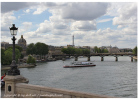Другие журналы

Hvesyuk
Ballistic Thermal Transfer in Nanosystems
Engineering Education # 05, May 2016
DOI: 10.7463/0516.0840329
Engineering Education # 05, May 2016
DOI: 10.7463/0516.0840329
pp. 140-151
Maximum Efficiency of Thermoelectric Heat Conversion in High-Temperature Power Devices
Engineering Education # 03, March 2016
DOI: 10.7463/0316.0835477
Engineering Education # 03, March 2016
DOI: 10.7463/0316.0835477
pp. 81-105
Excitation of Turbulent Fluctuations by Unstable Drift Wave in Non-uniform Plasma Flow
Engineering Education # 11, November 2014
DOI: 10.7463/1114.0736412
Engineering Education # 11, November 2014
DOI: 10.7463/1114.0736412
pp.800-816
Excitement of turbulence fluctuations by a drift wave in plasma flows with non-uniform velocity
Engineering Education # 09, September 2013
DOI: 10.7463/0913.0620533
Engineering Education # 09, September 2013
DOI: 10.7463/0913.0620533
In this work processes of formation of the drift turbulence in plasma with regard to existence condition of H‑mode were investigated for the first time. An effect of the drift wave of finite magnitude on plasma was considered. Influence of a poloidal plasma flow with linear velocity distribution vy(x) = Cx on a drift wave was also taken into account. A model was proposed and a program was developed for calculating the perturbations’ characteristics, which occur as a result of the specified influence. Dependencies of average values of plasma density fluctuations on the shear of velocity C and the growth rate of a drift wave γ were also obtained.
Calculation method for non-stationary heating of nano-structures
Engineering Education # 09, September 2013
DOI: 10.7463/0913.0617255
Engineering Education # 09, September 2013
DOI: 10.7463/0913.0617255
A non-stationary process of heat transfer in an insulated ordered multilayer nanostructure with specified initial temperature distribution was considered in the article. The structure consists of 1000 alternating layers of AlAs and GaAs. A heat transfer process model based on heat balance of a single layer was described in this paper. This model was used for heat transfer computations in ordered binary multilayer nanostructures for the first time. A process of heat transfer was investigated at different time moments, with different thicknesses of layers and heat resistances of interfaces. A case of deviation of periodicity in the structure was considered.
Suppression of turbulence with linear velocity profile in high-temperature plasma
Engineering Education # 09, September 2012
DOI: 10.7463/0912.0453605
Engineering Education # 09, September 2012
DOI: 10.7463/0912.0453605
The experiment showed effects of growth and destruction of drift waves which are directly responsible for plasma turbulence. As at the linear approximation of such waves the oscillation amplitude in the plasma is assumed to be small; it is impossible to to assess its value. The paper takes into account the amplitude finiteness of the drift wave and considers qualitatively the drift wave instability dynamics at nonlinear approximation. On the basis of this analysis it is shown that the presence of a linear velocity profile leads to wave breaking and suppression of turbulence. The authors obtained different characteristics depending on the nonlinear factor, increment of growth, wavelength, and initial amplitude.
Turbulence suppression by linear velocity profile in high temperature plasma
# 07, July 2012
# 07, July 2012
The effects of drift wave growing and destruction are presented in experiments and they are corresponded for turbulence in plasma. There is no way to find the amplitude of such waves at linear approach, because it considerably small. Amplitude growth is taken into account in paper and dynamics of drift wave instability are considered at nonlinear approach. The last analysis showed that the presence of linear velocity profile lead to overturn of wave and turbulence suppression. Some characteristics are obtained at different nonlinear factor, growing rate, wave length and beginning amplitude.
# 07, July 2012
The new method of numerical estimation of mechanical impulse is passed to the channel wall by cavitating gas-bubble collapsed near the one, was developed.For the first time the process of influence of cavitating bubble on a channel wall was considered as a point explosion in an incompressible liquid. The process of influence of empty cavity that is generated on the place of collapse cavitating bubble, on the channel wall was considered. The influence of beginning radius of cavitating bubble and a distance to channel wall on a impulse value was investigated. The cavitating bubble has spherical shape, process of bubble evolution is adiabatic; liquid – water.
Model of the impact of a cavitation bubble on the channel wall in the approximation of point explosion in an incompressible fluid
Engineering Education # 07, July 2012
DOI: 10.7463/0712.0435175
Engineering Education # 07, July 2012
DOI: 10.7463/0712.0435175
The authors developed a method for numerical evaluation of the mechanical momentum transferred to the wall by the gas-bubble cavitation at the moment when it collapses near the wall of the channel. For the first time the impact of the cavitation bubble on the wall is considered as a point explosion in an incompressible fluid. The impact of the empty cavity formed on the spot of the explosion of the bubble on the wall of the channel. The authors obtained the dependence of the momentum transferred to the channel wall on the initial bubble radius and the distance to the wall on which the bubbles collapses. The cavitation bubble is considered spherical, and the process of its evolution is adiabatic. In the calculations the authors considered water as the liquid.
| Authors |
| Press-releases |
| Library |
| Conferences |
| About Project |
| Phone: +7 (499) 263-69-71 |
|
||||
| © 2003-2024 «Инженерный вестник» Phone: +7 (499) 263-69-71 | |||||



